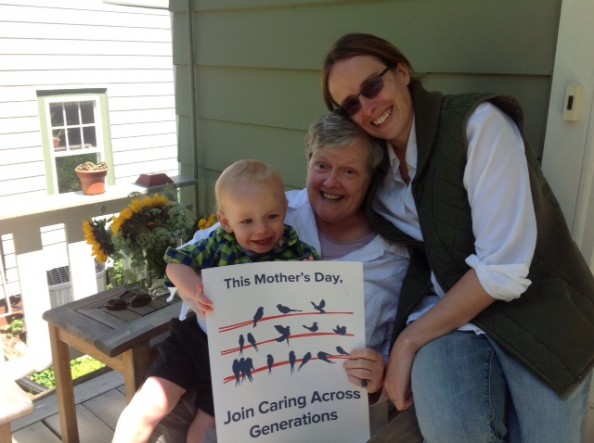by Wendy Chun-Hoon
My beloved professor of philanthropy, Mr. Payton, was always asking tough questions. “How will our country handle our aging? As we live longer, what will our quality of life be? Who will care for us?”
I remember thinking about my own family’s situation. My Popo (grandmother, in Chinese) was getting older. She had let us build our house right in back of hers, and my Aunty lived on the other side of her so we all checked in on her constantly. My uncle, who lived with her, eventually switched to the night shift so he could be with her during the day while the rest of us were at work and school. She had looked after us when we were young and my mom went back to work. It was never a question that we would care for her in her home, as she got older.
Mr. Payton looked at me and said, “You’ve got quite a blind spot about this, don’t you?”
As a country, we’ve got a blind spot. Today, 10 million seniors and individuals with disabilities can’t get the home care support they need. Care is increasingly becoming unaffordable. Care workers work long hours, for little pay and no benefits. And family members who need to take time off from work to help relatives transition into a long-term care arrangement lose wages and risk their jobs doing so.
In our lifetimes, each of us will provide or need care. Yet, our experiences are often isolating and disconnected from decisions about the future of our country.
Caring Across Generations is transforming the conversation about long-term care.
Last week – in honor of Mother’s Day and the millions of women who are delivering the bulk of our country’s long-term care – hundreds of home care workers, consumers, family caregivers, labor leaders and activists lobbied Congress for a comprehensive solution to our long-term care crisis. We came together to share our stories of care, finding in each a common desire for dignity and respect and realizing that we are deeply connected by the care we need and the care we give.
With her daughter asleep on her lap, Kimi Lee talked about how her life turned upside down when, just a few days after she gave birth, her own mother had a stroke.
Julia Feinberg, recent graduate from Stanford, talked about all the things her personal care attendant, Ali – like thousands of PCAs who go beyond their job description everyday – does to make her own life healthier and better.
Laura Reyes, Secretary-Treasurer of AFSCME, shared that when her son was born early and with cerebral palsy, she left her job as a teacher and became his caregiver. Laura looked down the panel at Gilda Brown, a homecare worker from Chicago who, after working with her consumer all day slips into her “job” as primary care provider for her 91-year-old mother, and said, “You are not invisible. We see you.”
In response, we called on Congress to commit to creating 2 million new home care jobs to meet the significant care gap our country’s facing, and to make sure that these jobs pay good wages and benefits like paid sick days so that care workers, like Gilda, don’t risk the health and wellbeing of their consumers if they themselves get sick.
We asked more than two dozen senators and representatives to sign on to the Sense of the Senate and Sense of the House resolutions outlining why these care jobs also need training and career ladders and that they provide a path to citizenship for the majority of women immigrants in these professions.
Finally, we asked Congress to support our “industrial strength” solution to affordability of long-term care, and other basic supports for family caregivers, such as family and medical leave insurance so that sandwich generation families, like Kimi’s, don’t risk their jobs and income during the one or two times in their lifetimes they need to take time out of the workforce to provide care for a loved one.


